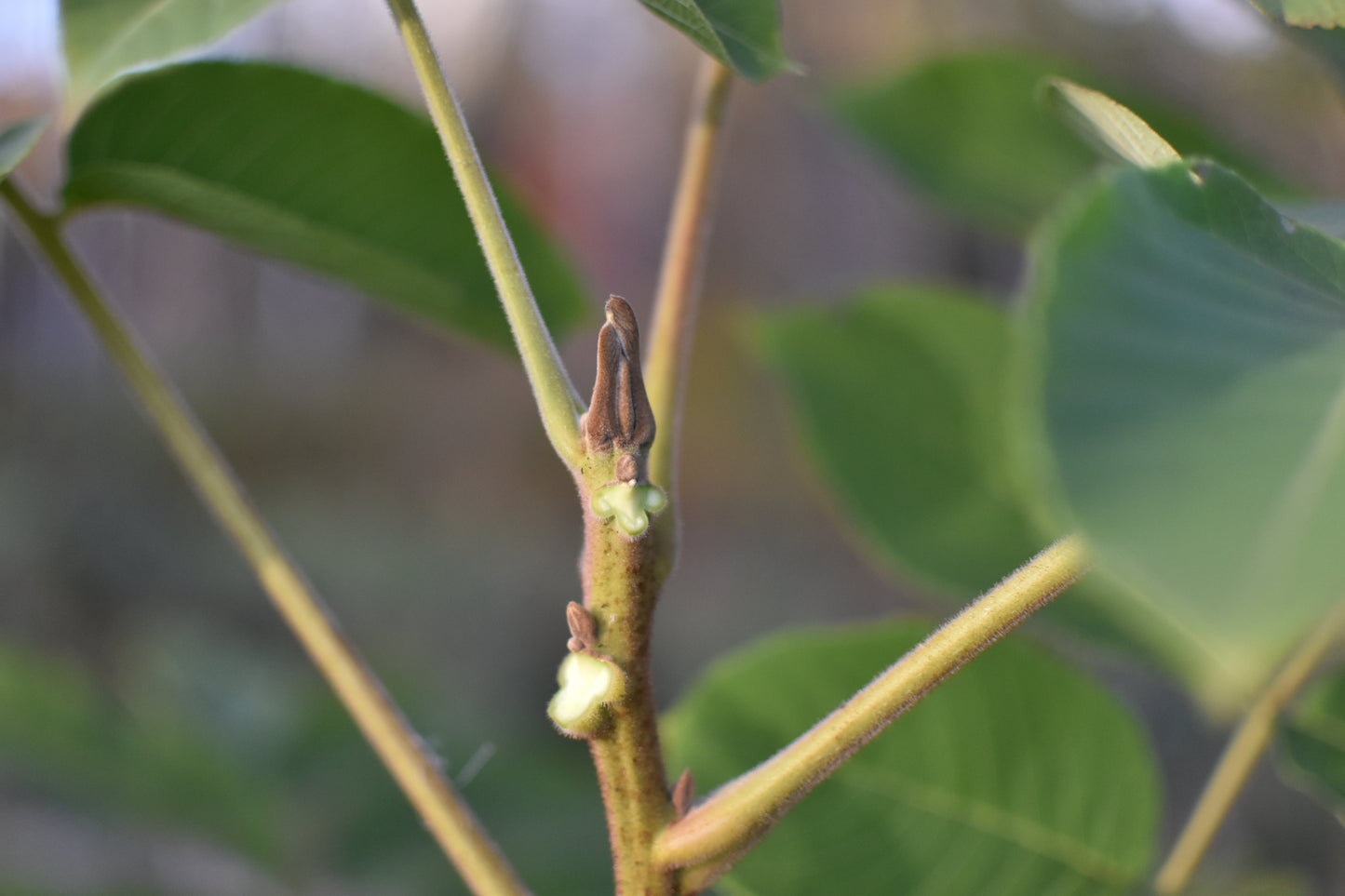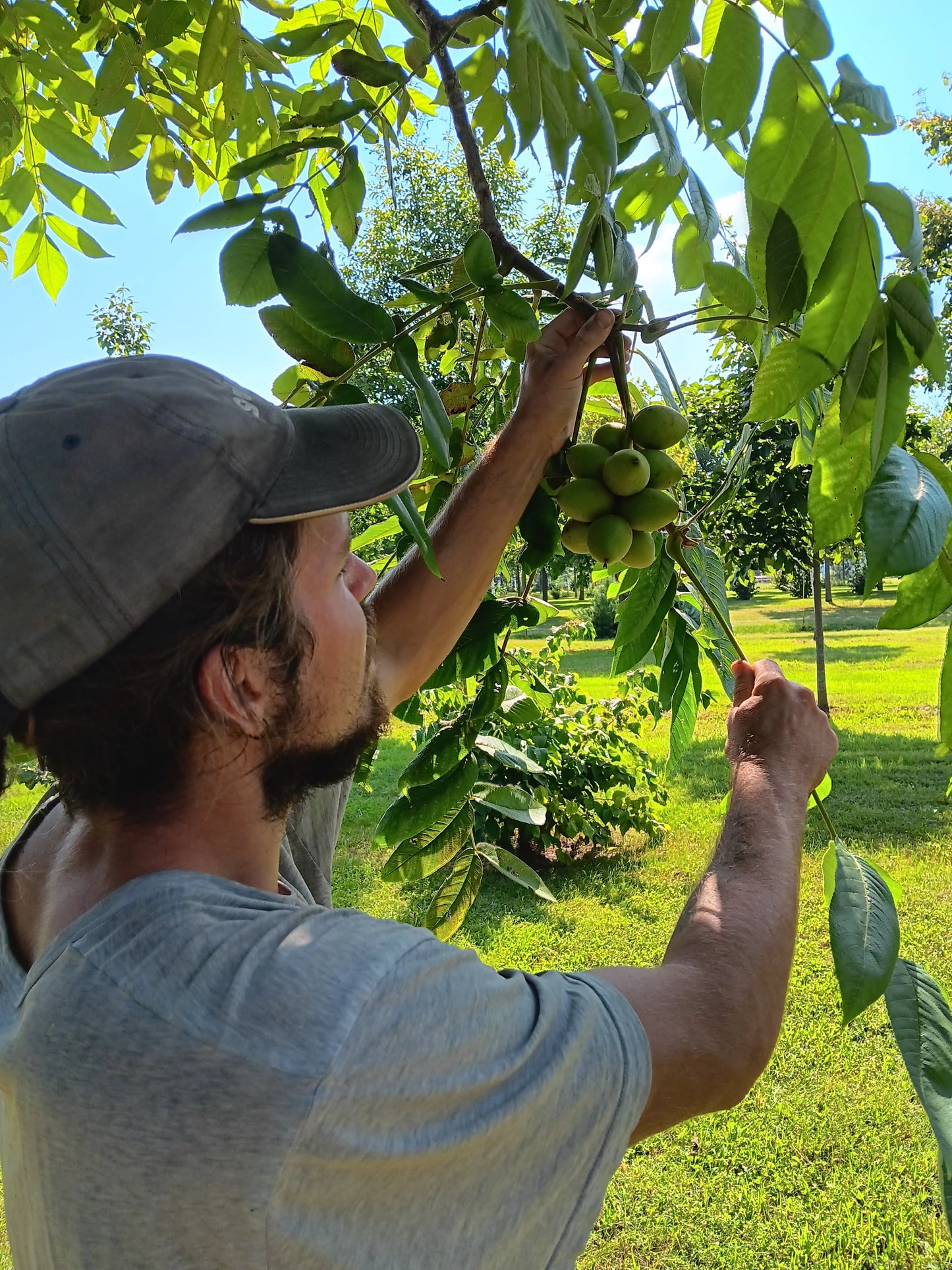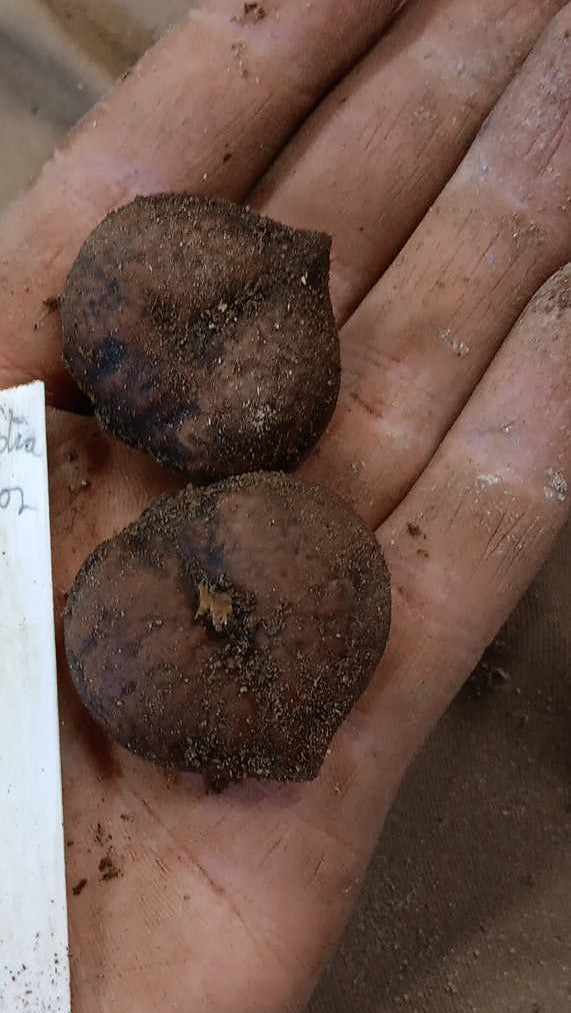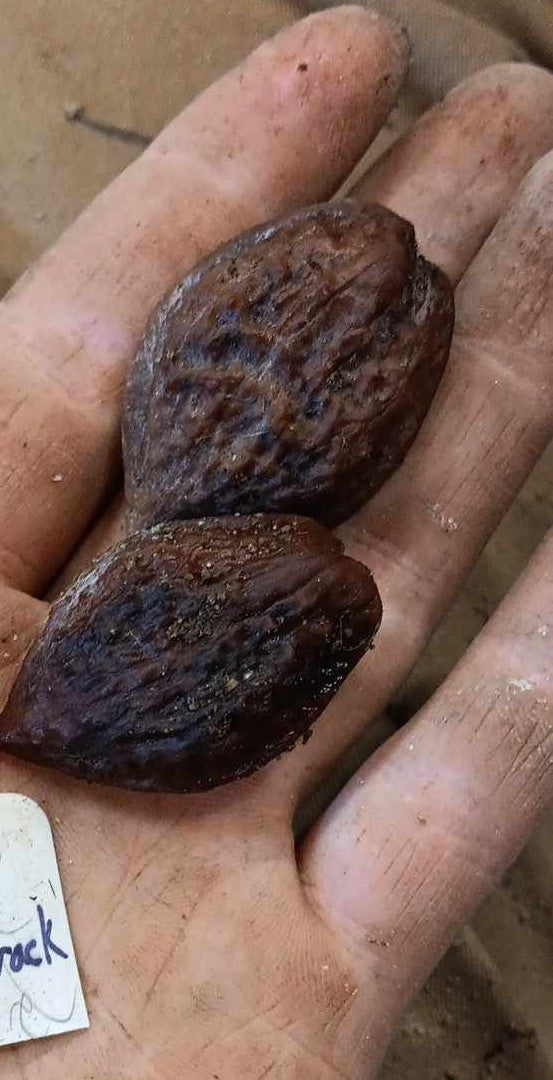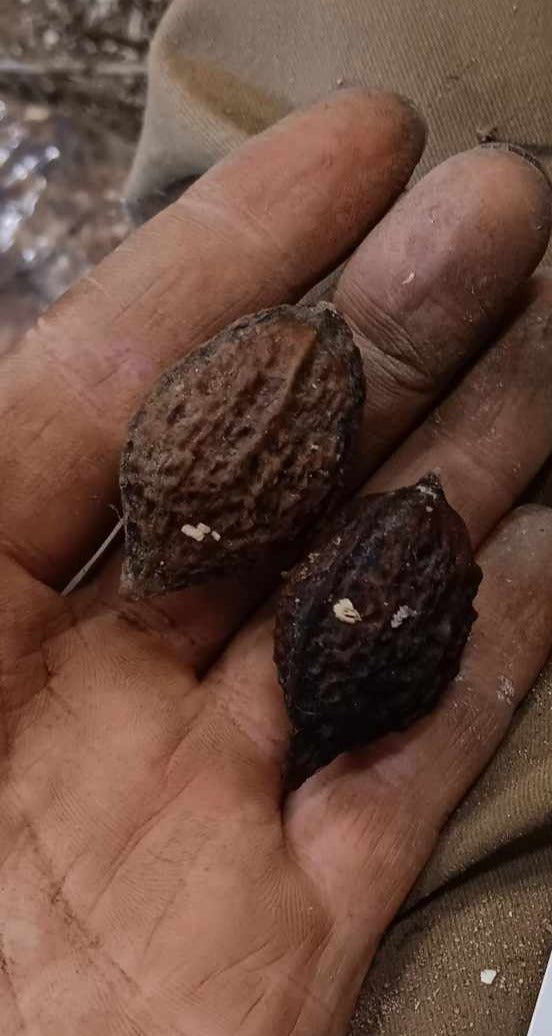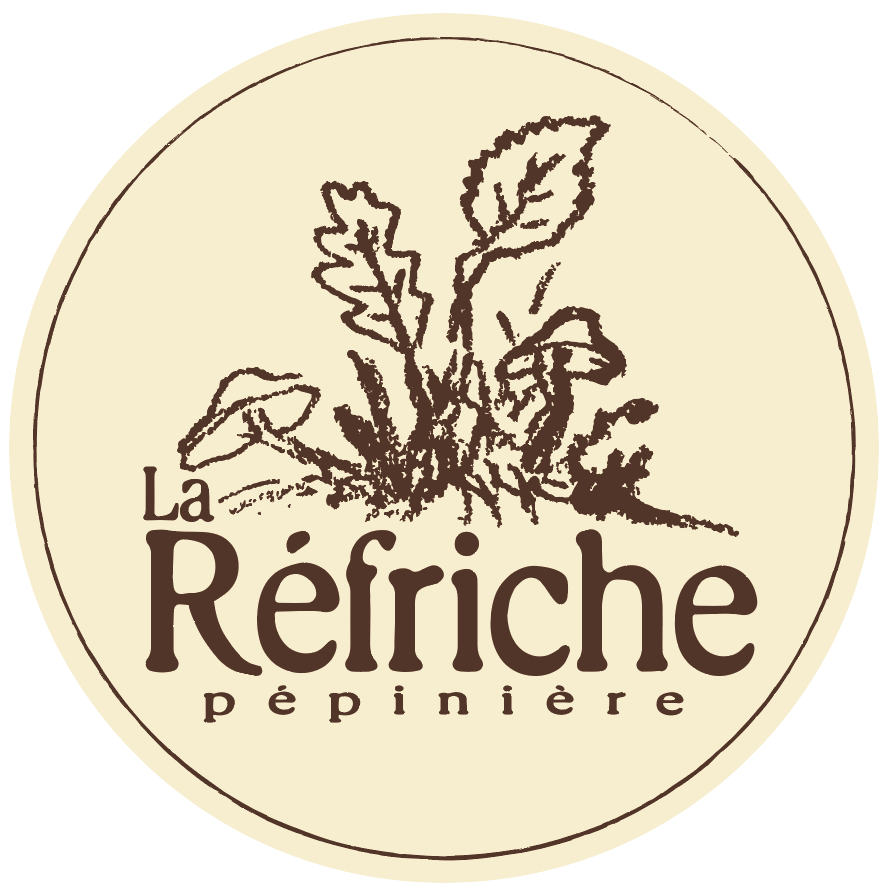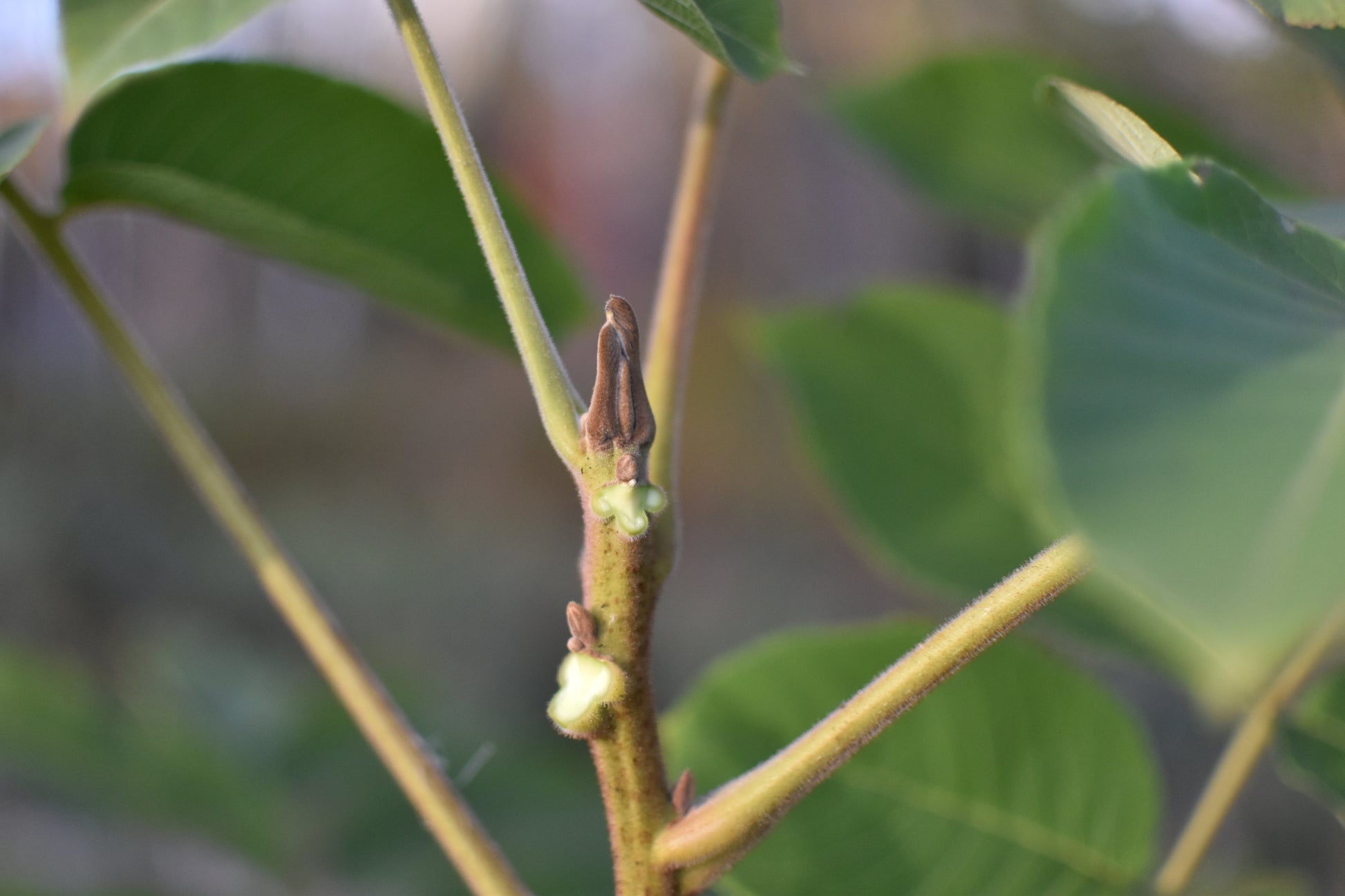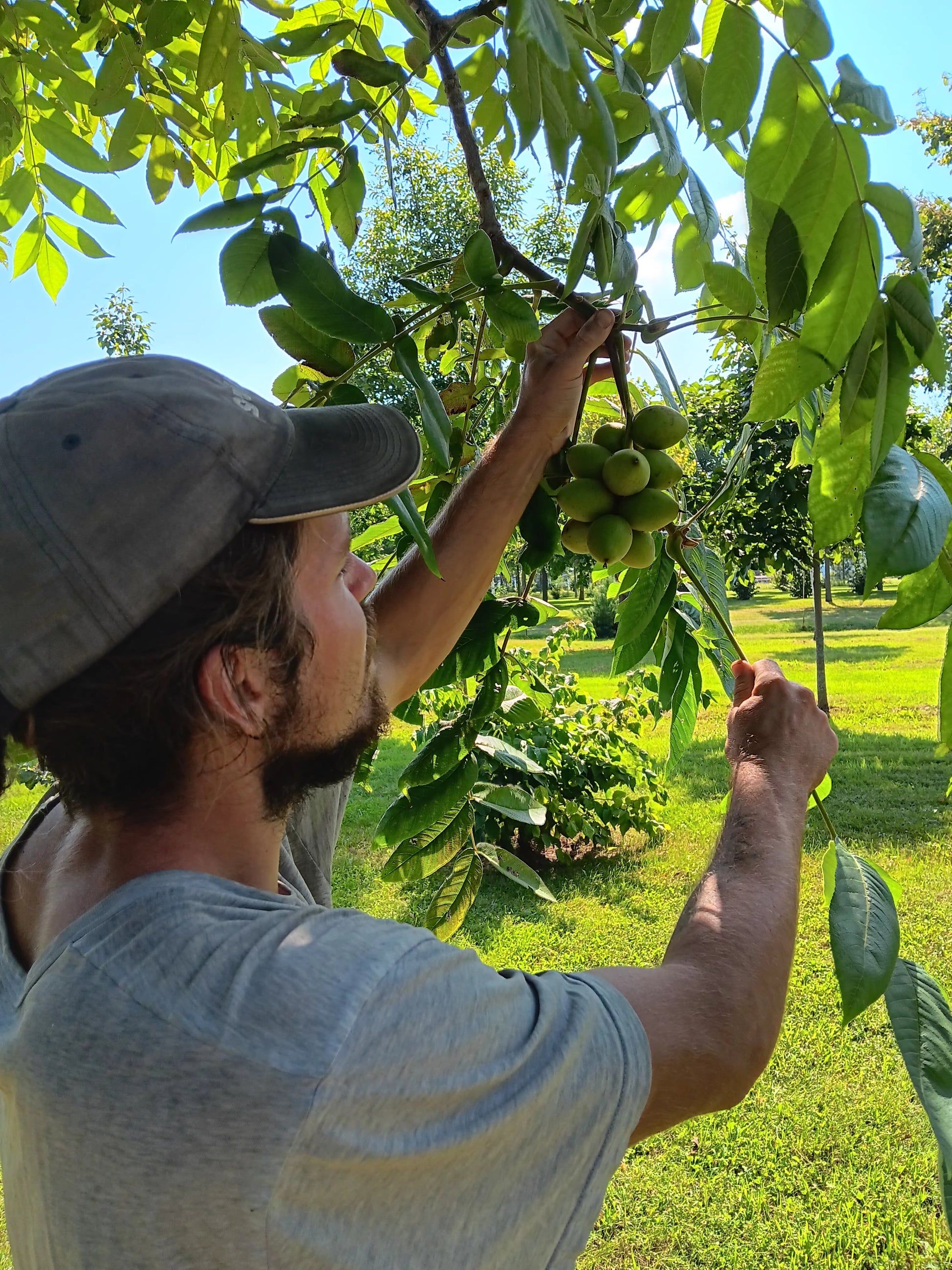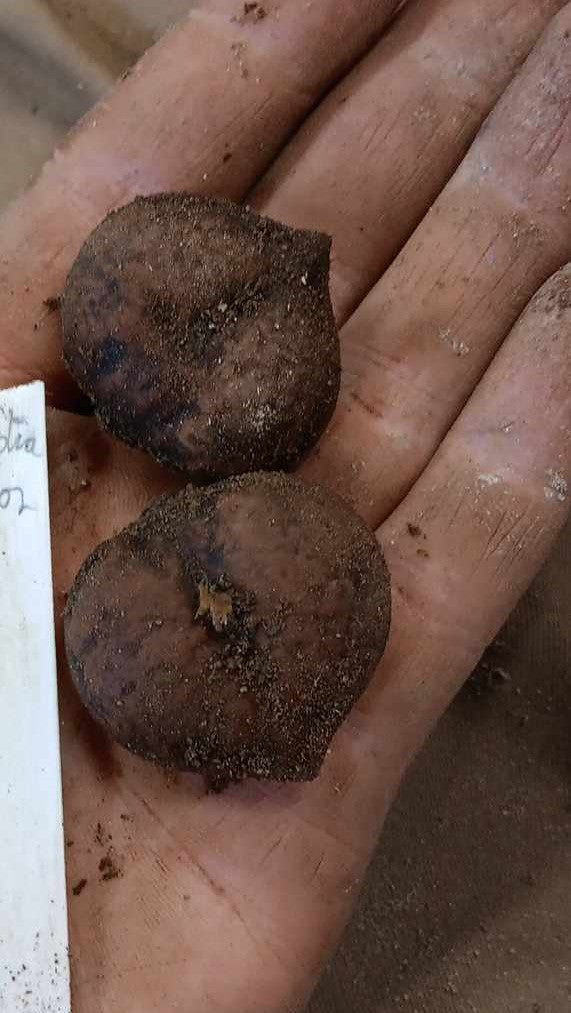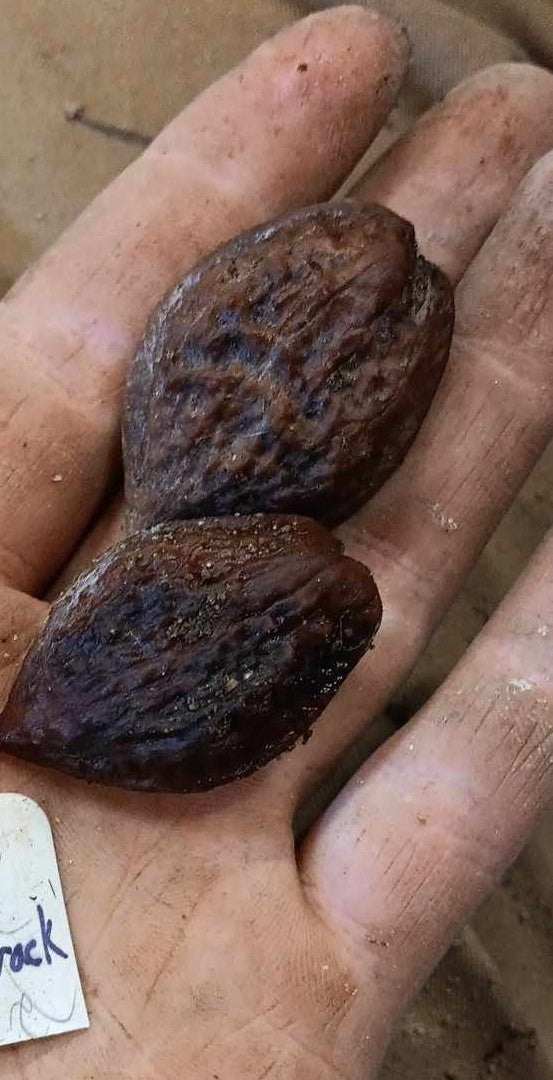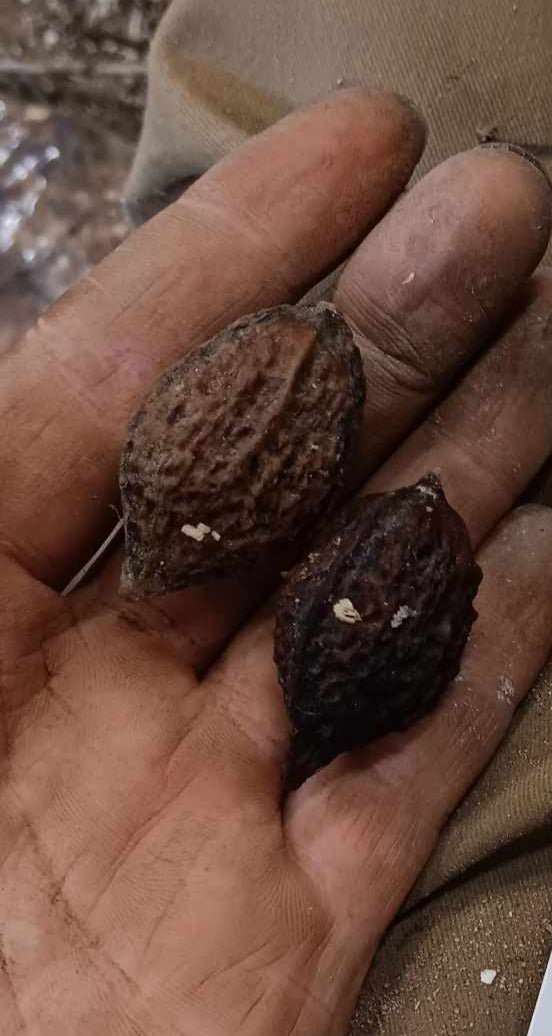La Réfriche Nursery
Heartnut (Juglans ailantifolia) -Zone 5
Heartnut (Juglans ailantifolia) -Zone 5
Couldn't load pickup availability
Juglans Ailantifolia var. cordiformis - Zone 5: Japanese walnut, originally from Asia, was imported to North America for cultivation in the late 19th century. The symmetrical nature of the nut makes it easier to crack than black walnut or butternut. Extraction of a whole kernel or a half-kernel is common. Its very long leaves and clusters of nuts give the tree a tropical look that is highly ornamental. Unusually, the cordiformis, or heart-shaped, variety has a unique nut shell that can be used to make necklaces or earrings.
Japanese walnut seedlings from ‘Imshu’ - Zone 4: These trees are the offspring of ‘Imshu’, a cultivar renowned as one of the hardiest Japanese walnut trees and one of the few that produces regular harvests in Zone 4. ‘Imshu’ was developed by John Gordon and produces medium-sized, heart-shaped nuts that break into a single piece with careful handling.
Japanese walnut ‘Covell’ line - Zone 4: These very hardy trees, whose seeds come from Saguenay, are the grandchildren of ‘Covell’. This cultivar was developed by John Gordon, a contemporary hybridizer known for his work on nut trees. The nuts from this tree are shaped like wild Japanese walnuts, which resemble butternuts but are smooth. Their kernels are plump and rich, with flavors reminiscent of coconut rather than butter.
Biotope
Biotope
It adapts to many types of soil, provided it is well drained. Full sun and deep soil are necessary for growth and fruit production. Prefers cool, moist but not soggy soil. Its use in windbreaks should be limited, as Japanese walnut is best planted in a location protected from the wind. Ideal for permaculture orchards or woodlands. The tree casts only partial shade under its leaves.
Wood
Wood
Its wood is lighter and less hard than black walnut. It is nevertheless used in cabinet-making for furniture. We recommend 6m spacing for log harvesting and 10m spacing for walnut production. Annual pruning is required to establish a good bole. In the case of tight plantings (3m or 6m), successive thinning is necessary to maintain good growth.
Size and shape
Size and shape
The tree can reach heights of 10 to 25 m and widths of 10 to 15 m without competition. They have a weak apical dominance that leads them to develop a splayed habit.
Pollination
Pollination
Self-sterile. Ideal fruiting is achieved by planting at least two different trees. Japanese walnuts are the fattest, with a neutral taste similar to coconut. It is necessary to extract their husk, dry them and use a nutcracker to extract the flesh.
Source
Source
Seeds from commercial walnut orchards in Quebec and Ontario in zone 5a. The mother trees were selected for their hardiness to our region and the gustatory quality of their nuts.
Share
